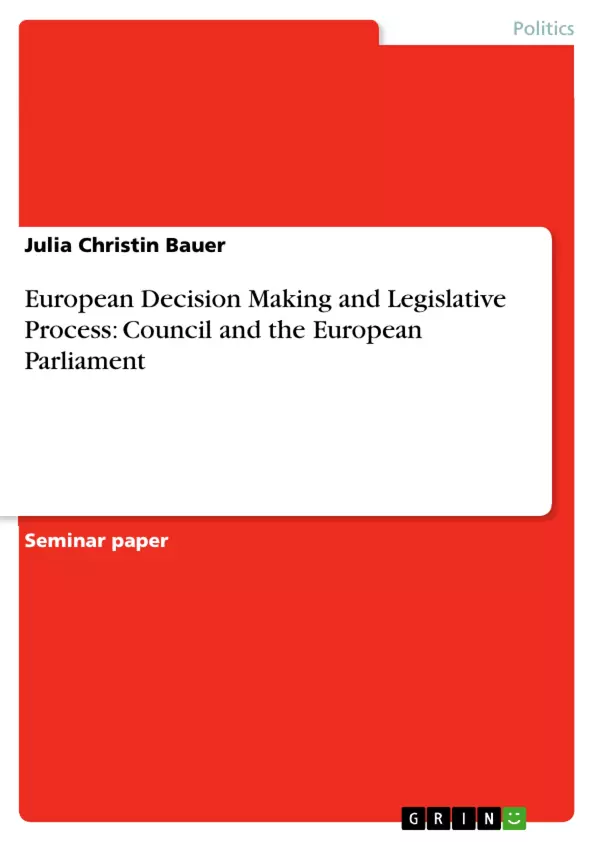QUESTION: To what extend can one say that Council and the European Parliament are on an equal footing in the legislative process? Use examples if possible to back up your answer.
The Council of the European Union and the European Parliament both play an important role in the legislative process of the European Union. Once a proposal was submitted by the European Commission, Council and Parliament will decide on the issue by using one of four forms of legislative procedures: codecision, consultation or assent and cooperation. The choice of procedure depends on the policy area of the proposal. Influence and power of Parliament and Council differ depending on the type of legislative procedure in use. There are cases in which the Council is dominant, for example in the decision on the directive on software patents , and areas in which the Parliament is dominant, such as the decision on stock storage of telecommunication data in 2005.
Inhaltsverzeichnis (Table of Contents)
- Introduction
- Legislative Procedures
- Codecision Procedure
- Consultation Procedure
- Assent Procedure
- Cooperation Procedure
- Comparison of Council and Parliament
Zielsetzung und Themenschwerpunkte (Objectives and Key Themes)
This paper examines the extent to which the Council of the European Union and the European Parliament are on an equal footing in the legislative process. It analyzes the different legislative procedures used by the EU, comparing the power dynamics between these two institutions.
- Legislative Procedures in the European Union
- Power Dynamics between the Council and the Parliament
- Comparison of Different Legislative Procedures
- The Role of the European Commission
- Criticisms of the European Parliament's Power
Zusammenfassung der Kapitel (Chapter Summaries)
The introduction sets the stage by outlining the significance of the Council and Parliament within the EU's legislative framework. The paper then delves into a detailed examination of the four main legislative procedures: codecision, consultation, assent, and cooperation. Each procedure is analyzed in terms of the roles and influence of both the Council and the Parliament, with examples illustrating the varying power dynamics across different policy areas. The analysis of the codecision procedure highlights its intended equal sharing of power, while the other procedures reveal varying degrees of influence for each body. For example, the consultation procedure demonstrates the Council’s greater power, as parliamentary suggestions are not binding. The assent procedure shows another limitation of the Parliament's power, as it is restricted to accepting or rejecting proposals without amendment. Finally, the cooperation procedure illustrates how, despite increased influence through a second reading, the Council ultimately retains the ability to block legislation.
Schlüsselwörter (Keywords)
European Union, Council of the European Union, European Parliament, legislative process, codecision, consultation, assent, cooperation, power dynamics, policy areas, legislative procedures, EU decision-making.
- Citar trabajo
- BA Julia Christin Bauer (Autor), 2008, European Decision Making and Legislative Process: Council and the European Parliament , Múnich, GRIN Verlag, https://www.grin.com/document/119469



